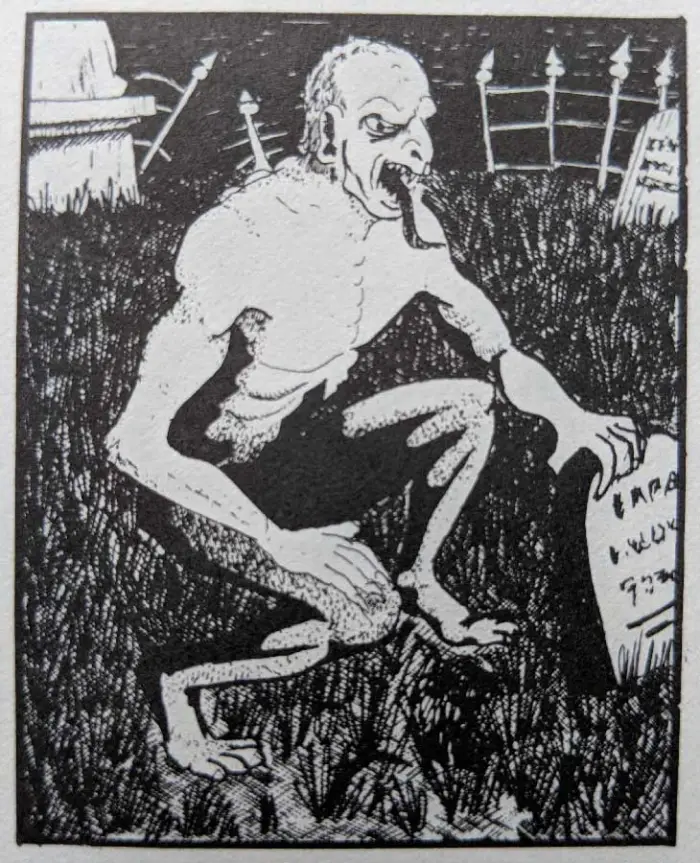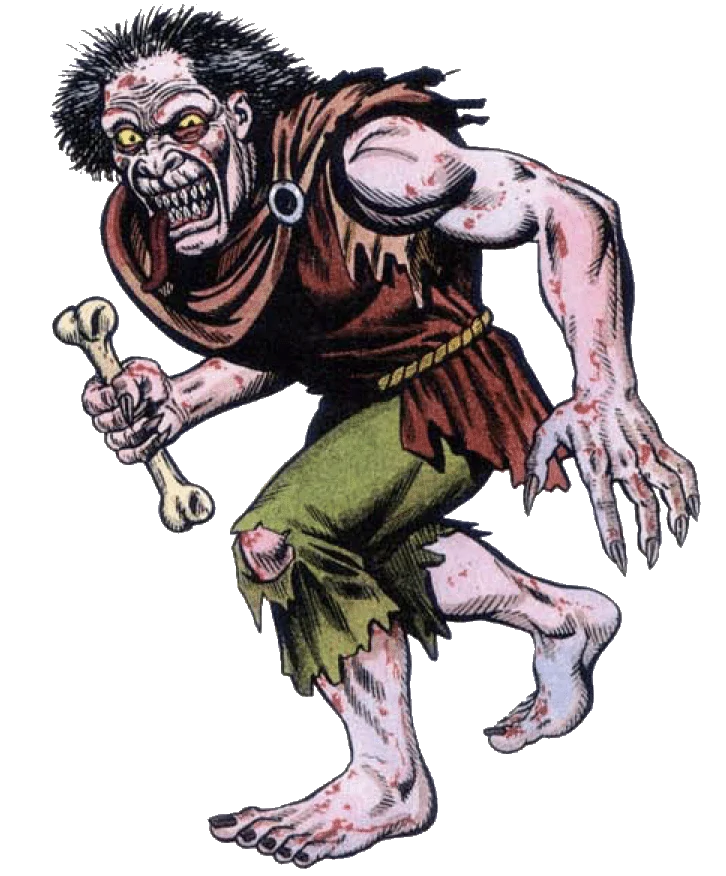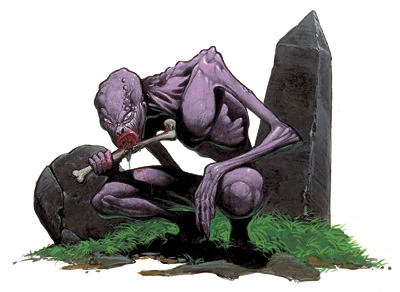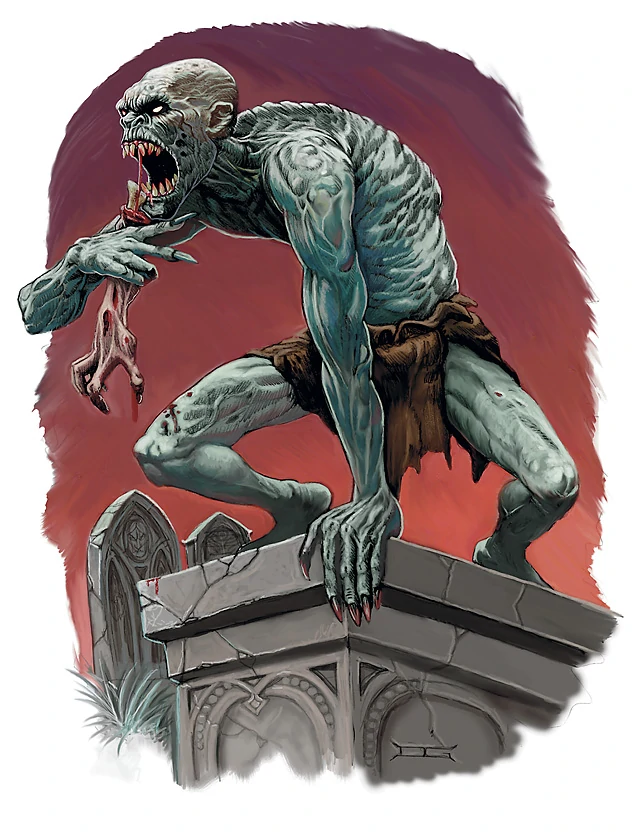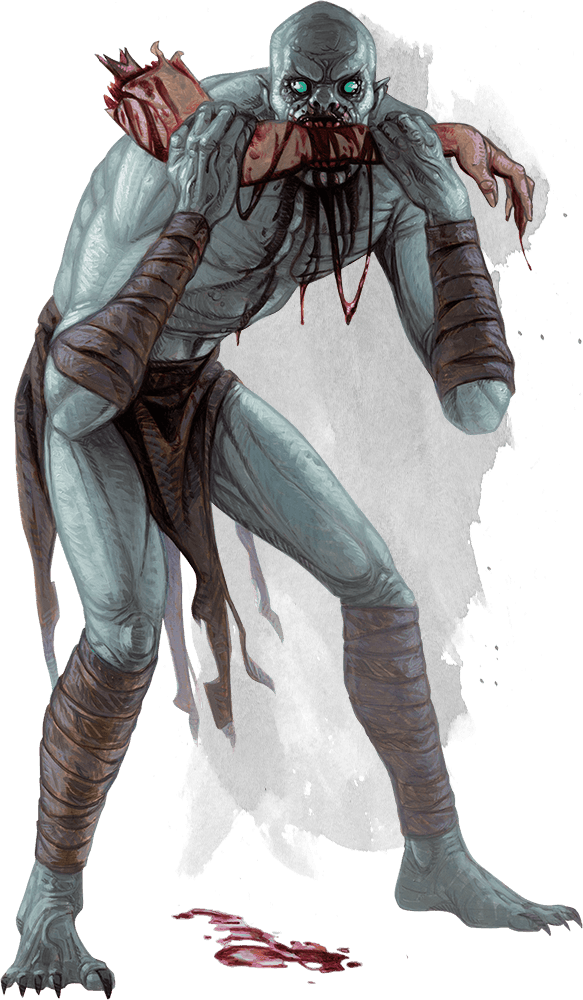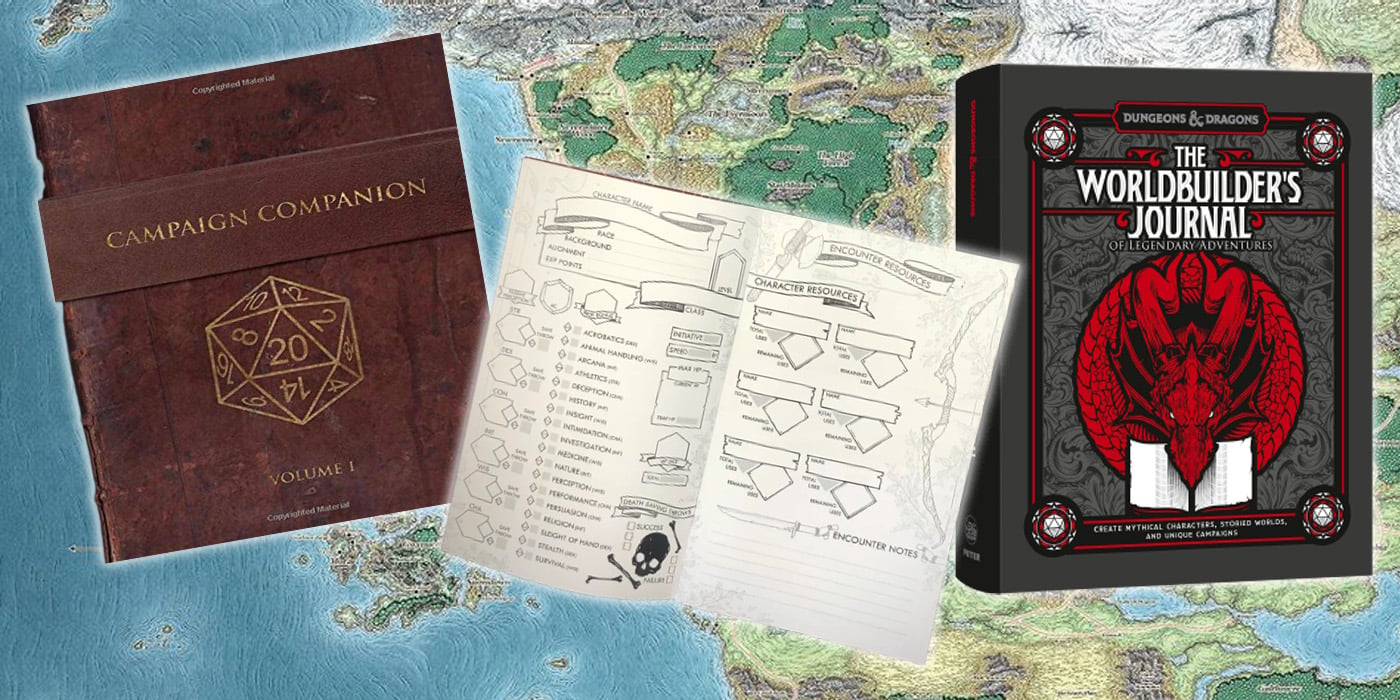D&D Monster Spotlight: Ghouls
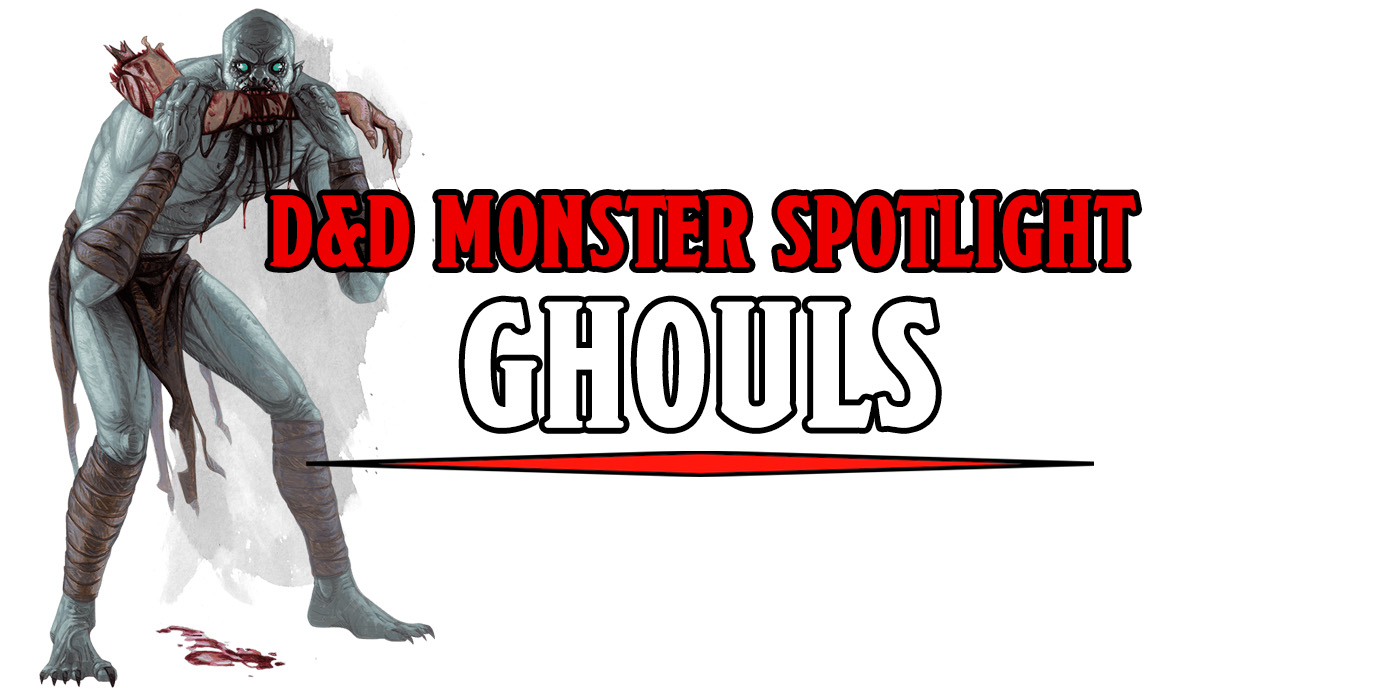
These undead creatures are looking forward to taking you out for a bite. Sorry, I mean taking a bite out of you. That’s a D&D ghoul for ya!
First Edition
Ghouls are monsters who were once human. Now they are undead creatures that feed on humans and human corpses. Though unlike some other monsters of the undead persuasion, their minds have been made cunning and deadly specifically for person hunting. Their go-to attacks are their fangs and claws and they attack tirelessly, in packs, and without fear. But much worse, the touch of a Ghoul causes humans, dwarves, halflings, half-elves and gnomes – but not elves – go to into a rigid paralysis. Sleep and charm spells have no effect on Ghouls, but they can be kept at bay with a Circle of Protection spell.
Second Edition
Though Ghouls were once human, they have physically changed to be almost entirely unrecognizable. Their tongues become longer for “licking marrow from cracked bones,” and their teeth and nails grow long and sharp and stronger. Unlike your average zombie who seems to rot away as they shamble undeadly through town, the Ghoul gets tougher and far less mindless in their killing. Any human or demi-human killed by Ghouls will become a Ghoul themselves unless blessed or devoured by said attacking Ghouls. Luckily, with relatively low hit-dice, Ghouls shouldn’t be a terribly difficult monster for most adventurers who aren’t complete novices to defeat.
Third Edition
You are most likely to find a Ghoul in a graveyard, battlefield, or anywhere else where the “stench of death hangs heavy.” While they can (and will) hunt for their next meal, they’d just as happily spend time in a place where the meals don’t run away, scream, or try and fight back. In 3E, the rumor is that Ghouls were once regular people who engaged in cannibalism in life. But even in the Monster Manual it is admitted that this may or may not be an old wives tale. Especially given that somebody who dies of “ghoul fever” after being bitten will turn into one themselves.
Forth Edition
Forth Edition changes the Ghoul rules a little. Now the “ghoul fever” isn’t an issue any more than getting-bitten-by-a-monster is always never ideal. Instead, now it is verified that they are born when a humanoid individual who engaged in cannibalism in life dies. Or, they can be crated using a ritual. 4E also introduces the “Hoard Ghoul,” the “Abyssal Ghoul” the “Abyssal Ghoul Hungerer,” and the “Abyssal Ghoul Myrmidon.” These all feel like the same monster with very slightly different tactics. The only major difference is the Myridon has the “Dead Blood” ability which allows them to burst when they hit zero hit points and hit any nearby foe with 5 points of necrotic damage.
Fifth Edition
Ghouls have Abyssal origins. Doresain the first was an elf and worshiper of Orcus. He engaged in cannibalism in order to please his master. He was transformed into the first Ghoul as a reward and went on to create more Ghouls. The creatures never gain any nourishment from the flesh they devour, but are driven by an insatiable need to feed anyhow. That said, they never rot and can go on for years and years with no food.
Have you encountered a Ghoul in your adventures? How did your party handle it? Were any of your party members at risk of turning themselves? Let us know in the comments!
Happy Adventuring!

